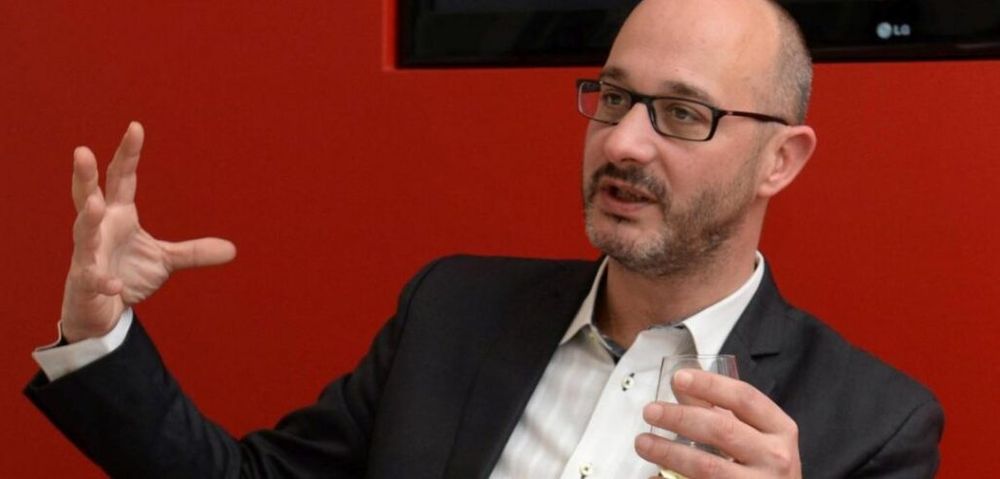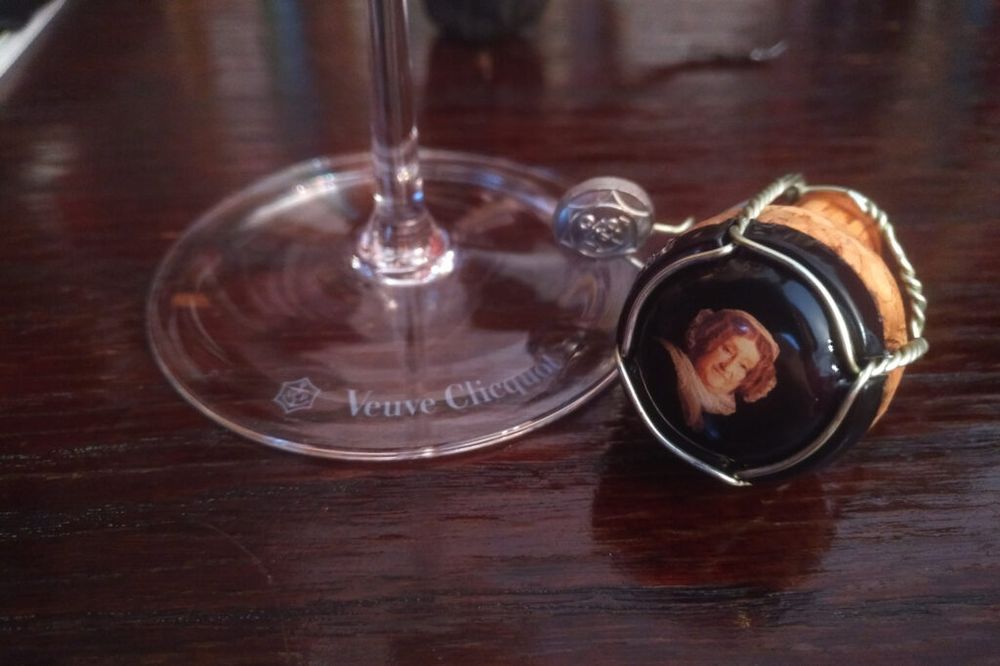“When people taste this blind, I am not sure they will realise that this is 90% Pinot Noir,” says Mariotti about the La Grande Dame 2012.
It must be a strange feeling for a new chef de cave to present wines that he had no hand in making. This task fell to Veuve Clicquot’s cellar master, Didier Mariotti, for the launch of the new vintage of the house’s flagship prestige cuvée La Grande Dame 2012. Mariotti only joined LVMH’s famous yellow label in August 2019 – however, his track record in Champagne is sound, and so is his connection to Dominique Demarville who was chef de cave at Veuve Clicquot from 2006 until 2019: Mariotti and Demarville worked together at G.H. Mumm for three years, from 2003 until 2006. With a Corsican mother and a Burgundian father, however, Mariotti has wine in his blood and he was evidently at ease talking about this Pinot-led wine.

Didier Mariotti
The prestige cuvée, first created in 1962 and released in 1972 to mark the 200th anniversary of the house, is a homage to its first female boss, Barbe-Nicole Clicquot-Ponsardin, who took over in 1805. La Grande Dame has always been based predominantly on Pinot Noir, precisely because Madame Clicquot believed that “the finest white wines come from red grapes.”
Mariotti explained that it had been Demarville who had decided to increase the proportion of Pinot Noir in this wine from about 65% to 90% – as a clear departure from the Veuve Clicquot vintage wines which usually have a lower Pinot Noir base. “It is 65%-75% Pinot Noir for vintage and 90% for La Grande Dame,” Mariotti said. “So we really have two different expressions.”
Another, equally crucial change was to source more of this Pinot Noir from other villages: “The big move was not only to use 90% Pinot Noir but to move from south to north. We are using all the historic crus and grands crus of the house, Aÿ, Bouzy and Ambonnay but also Verzy and Verzenay. [These villages] have something sharp, straight to the point. Pinot Noir from Verzy and Verzenay brings that structure and that bitterness,” Mariotti explained.
“There is something I really enjoy and that is bitterness. Many people are afraid of bitterness, but bitterness creates a very long finish in the wine, much more than acidity. Acidity you feel at the beginning in the mouth, but bitterness is at the end.” He also emphasised that in this Champagne the “minerality is not based on chalk, it’s the minerality coming from Verzy and Verzenay.” He added that the 10% portion of Chardonnay had been sourced from Mesnil sur Oger and Avize, noting that Mesnil sur Oger was “very interesting because it brings that fresh attack.”

We all know that 2012 was what the Champenois like to call a “solar” year, and the 2012 vintage Champagnes are usually open, approachable, generous and come with a certain ease. To illustrate his point about the more northerly origin of the Pinot Noir base wines, two glasses were provided for the tasting: one slender, smallish tulip-shaped glass and a ballonish, large glass.
Mariotti said: “The choice of glass is really important. With this vintage we are expressing something that is very different. Lots of people think that Pinot Noir is a very full-bodied wine, but the idea of La Grande Dame 2012 is to show the elegance of Pinot Noir. We want to express Pinot Noir in a vertical way by using wine from the north, from Verzenay and Vergy.”
The slender glass was there to express “the verticality of the wine,” said Mariotti, whereas the big glass “will really open the wine and show its texture and complexity. In 2012 right now you have a lot of structure, you feel the freshness and vibration of the wine, then in the larger glass you can feel the texture coming, and the mid-palate of the wine comes from Aÿ, Bouzy and Ambonnay. We are not expressing power, we are not expressing body, we are expressing delicatesse, we are expressing finesse. When people taste this blind, I am not sure they will realise that this is 90% Pinot Noir.”

Veuve Clicquot La Grande Dame 2012 Brut, 12.5%
A slight, initial smokiness on the nose stays beautifully present, clothing the initial red apple notes. Increasing temperature and air add a lovely mint tisane liftedness on the nose. Smooth, fine foam is right away striking on the palate, immediately giving a feeling of smoothness, of flow, of a fresh, yet rounded sweep of bright, ripe, fresh fruit. There is a lovely firmness on the midpalate while subtle freshness only seems to enhance the fruit that almost verges onto yellow plum. This is generous but defined and so, so ready to be enjoyed. An ideal, rounded Champagne for the winter months.
All the base wines went through malolactic fermentation and the wine was disgorged with 6g/l of dosage. The wine will be on pre-order exclusively from Selfridges.com as of 27 October 2020 and will be launched officially on 9 November 2020 exclusively at Selfridges. The RRP is £160
































